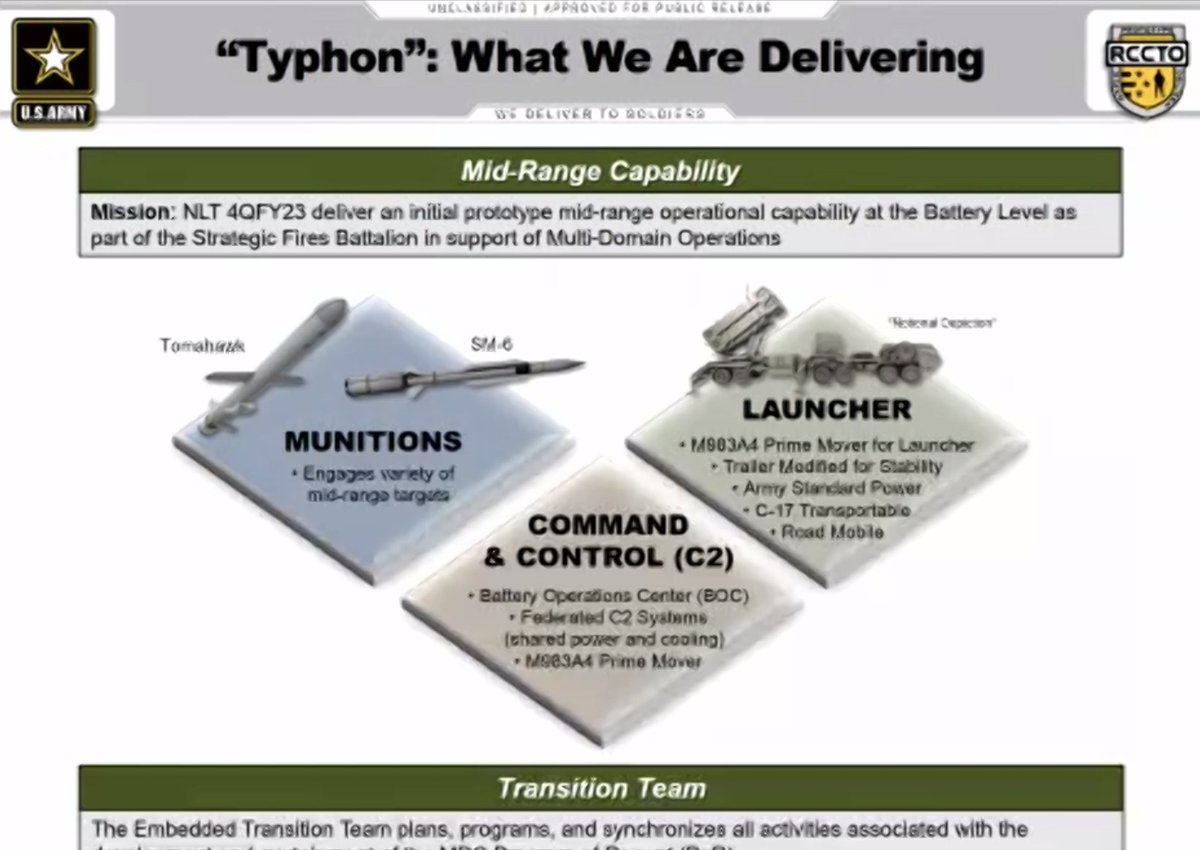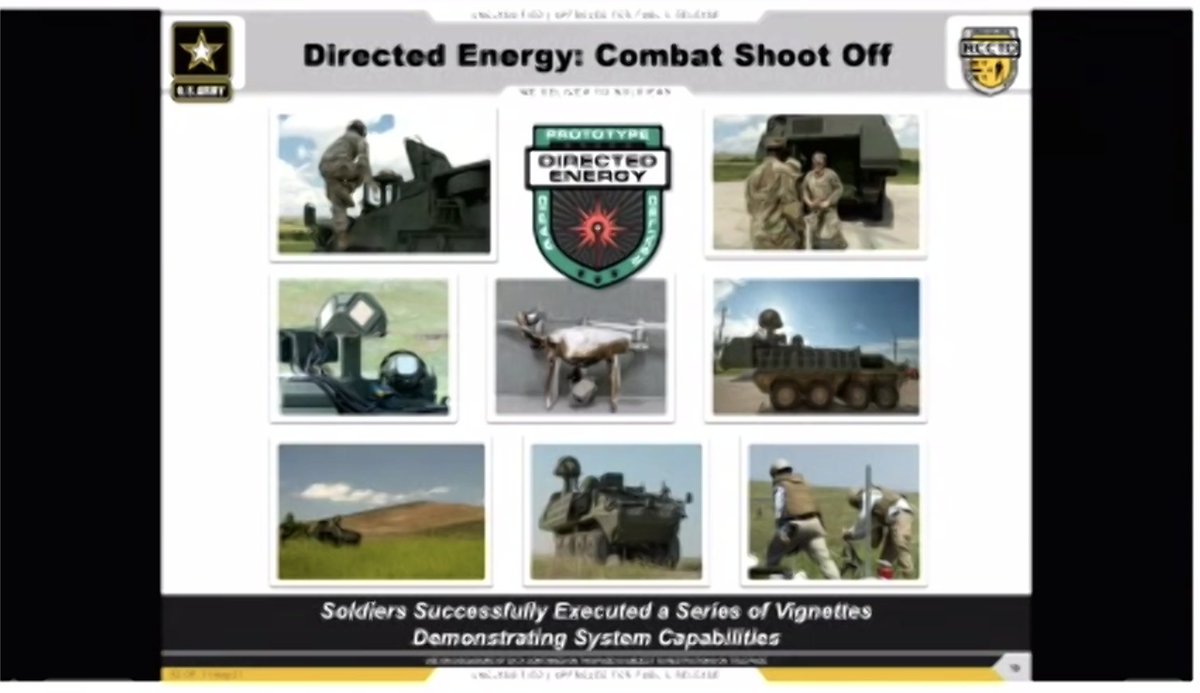
#SMD2021 panel: RCCTO internally referred to LRHW as Army's "dark eagle." No difference in 34.5" booster for Army and Navy systems, except canister. TEL is built off existing trailer, and "took a known C2 system" for battery operations. 

BG Rafferty: "we're going to have an application on the Titan ground station that is going to generate the calls for fire"— ML model will be "driven by the commander's high priority target list"
"The materiel domain is leading…and pulling the other domains along. And I think that’s the reality of the Information Age, of the 21st century—is that technology is going to lead us. And it’s one of the fundamentals of the Army Futures Command approach, which is...
...Let’s have an intersection of technology and concepts, let’s have one inform the other, let’s have a virtuous cycle of researchers and concepters working together so we can imagine what could be in the future."
"Our commitment, with the abbreviated CDD process, is to capture that initial prototype capability that gets out there. And then use that capability to describe what the objective capability should be. So that we free up that continued materiel development over time, based on...
...not just what our soldiers think about the equipment, and that soldier feedback, but what our units and commanders think about how they’ll fight with it in the future."
My paraphrasing: Panel emphasizes Army Futures Command philosophy on "soldier-centric" process. Instead of imposing big book of requirements up front, rapidly prototype a capability based on core operational need. Test to refine design and CONOPS based on soldier feedback.
Rasch and others note examples where soldiers pointed out UI inefficiencies in various prototypes which were patched in next cycle. With ERCA, Army intends to begin 1-year operational assessment of 18 prototypes in FY23, refining tech, doctrine, and organization.
And on LRHW: Battery will be 4 TELs with 2 missiles per, with an AFATDS-equipped C2 vehicle. TEL trailers are "already in inventory."
Notable upcoming flight tests:
JFC-1 (Early FY22) first operational config. flight test.
JFC-2 (4th Q. FY22) first flight test from TEL.
JFC-3 (Early FY23) "The graduation event...fully unit independent. They will fly in, they will set up, launch, redeploy back to home base"
JFC-1 (Early FY22) first operational config. flight test.
JFC-2 (4th Q. FY22) first flight test from TEL.
JFC-3 (Early FY23) "The graduation event...fully unit independent. They will fly in, they will set up, launch, redeploy back to home base"
• • •
Missing some Tweet in this thread? You can try to
force a refresh










